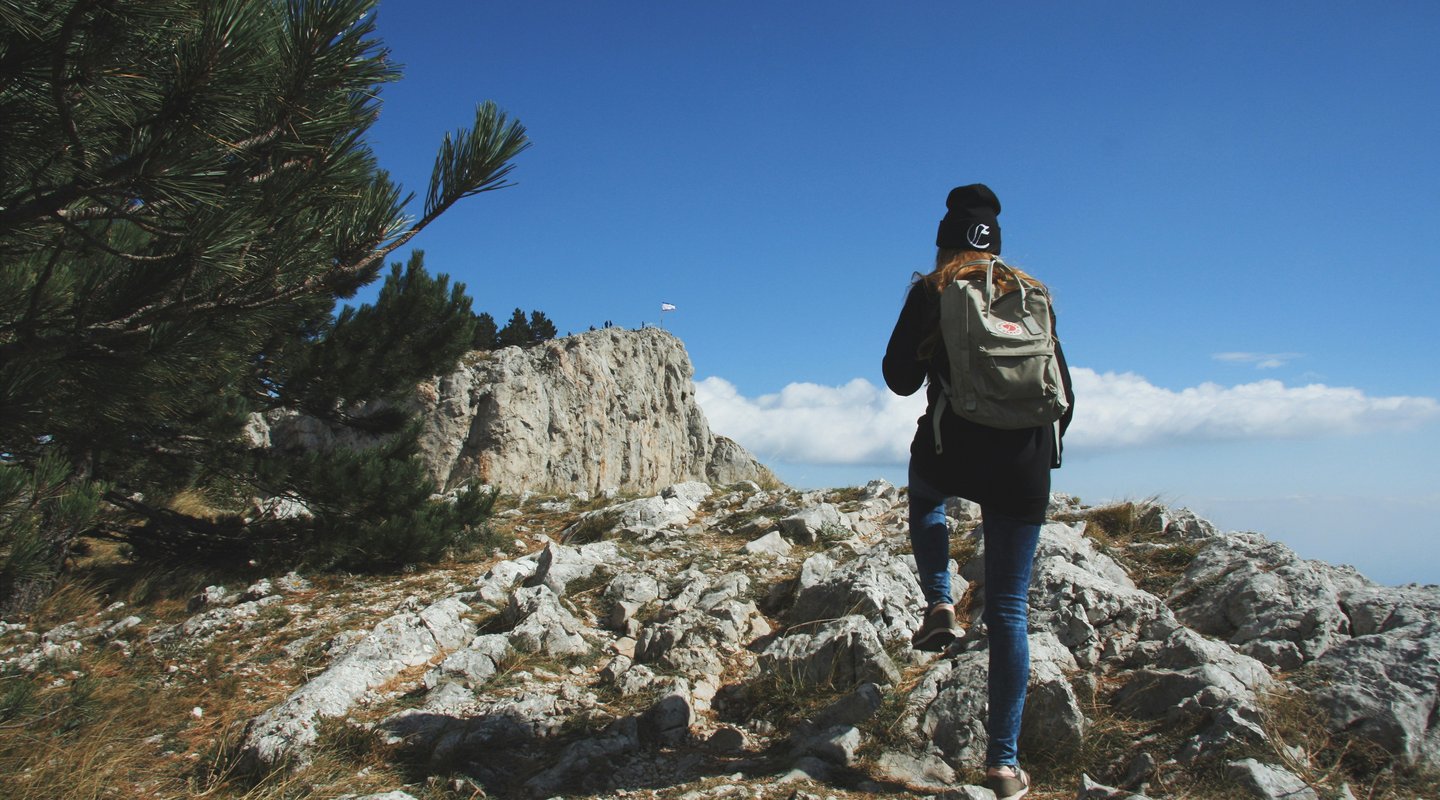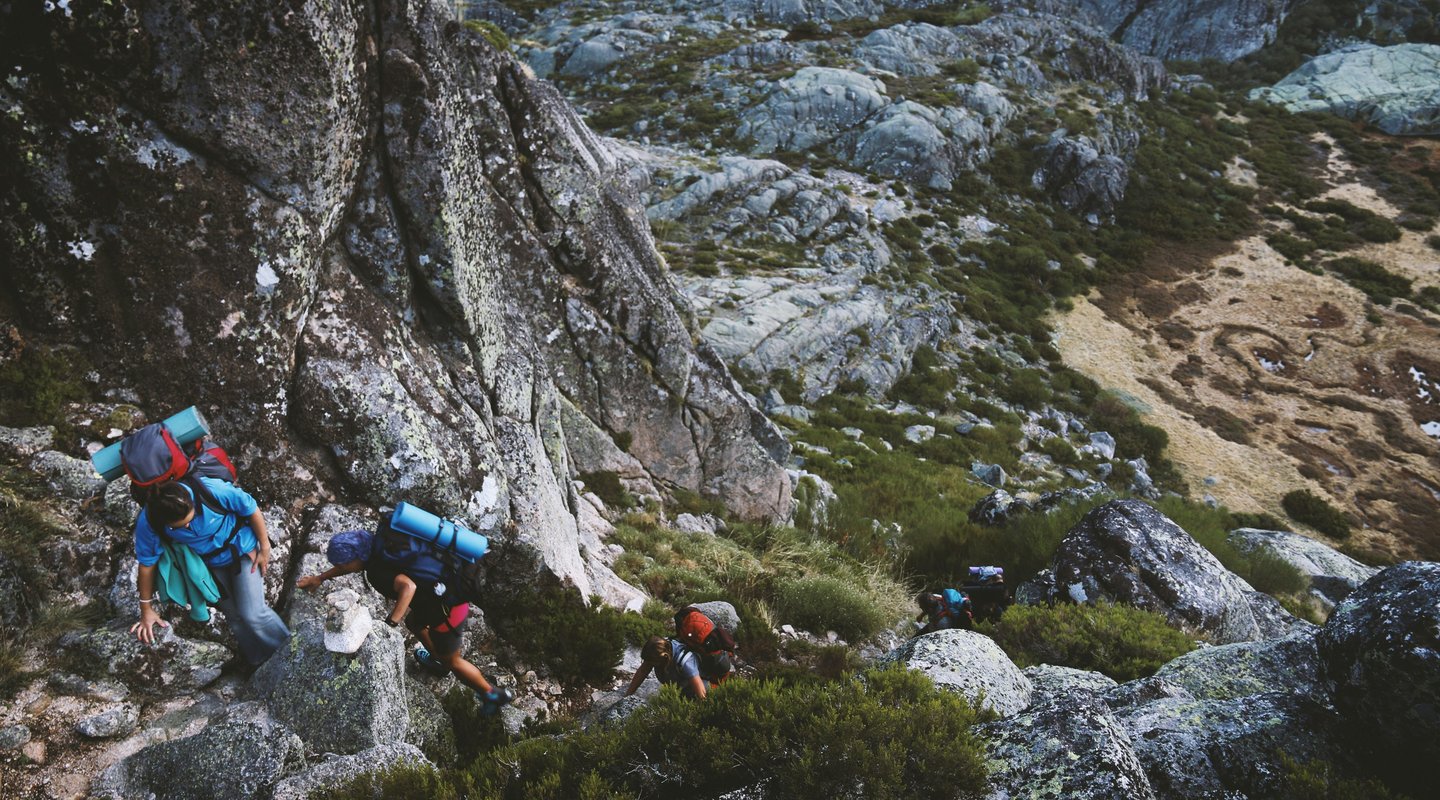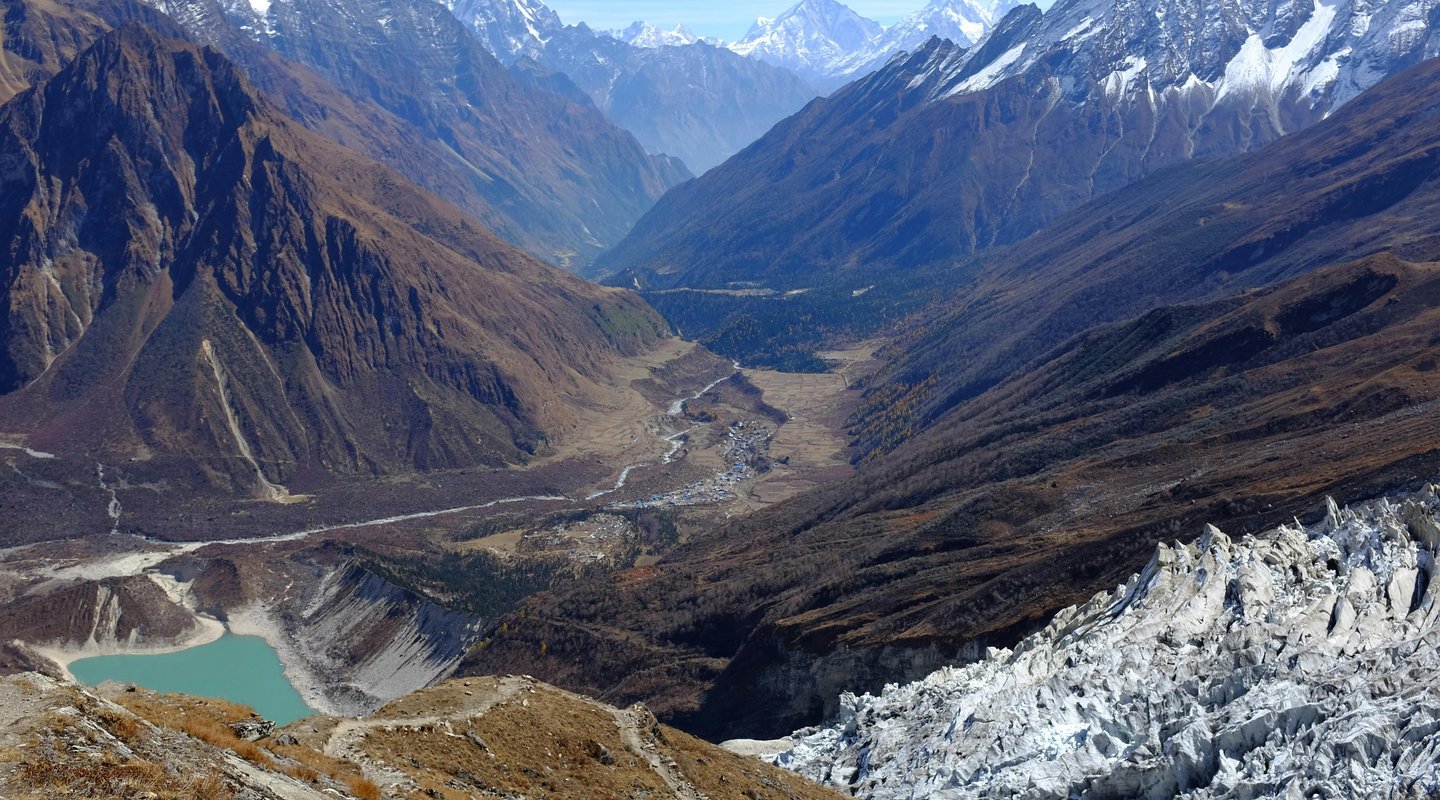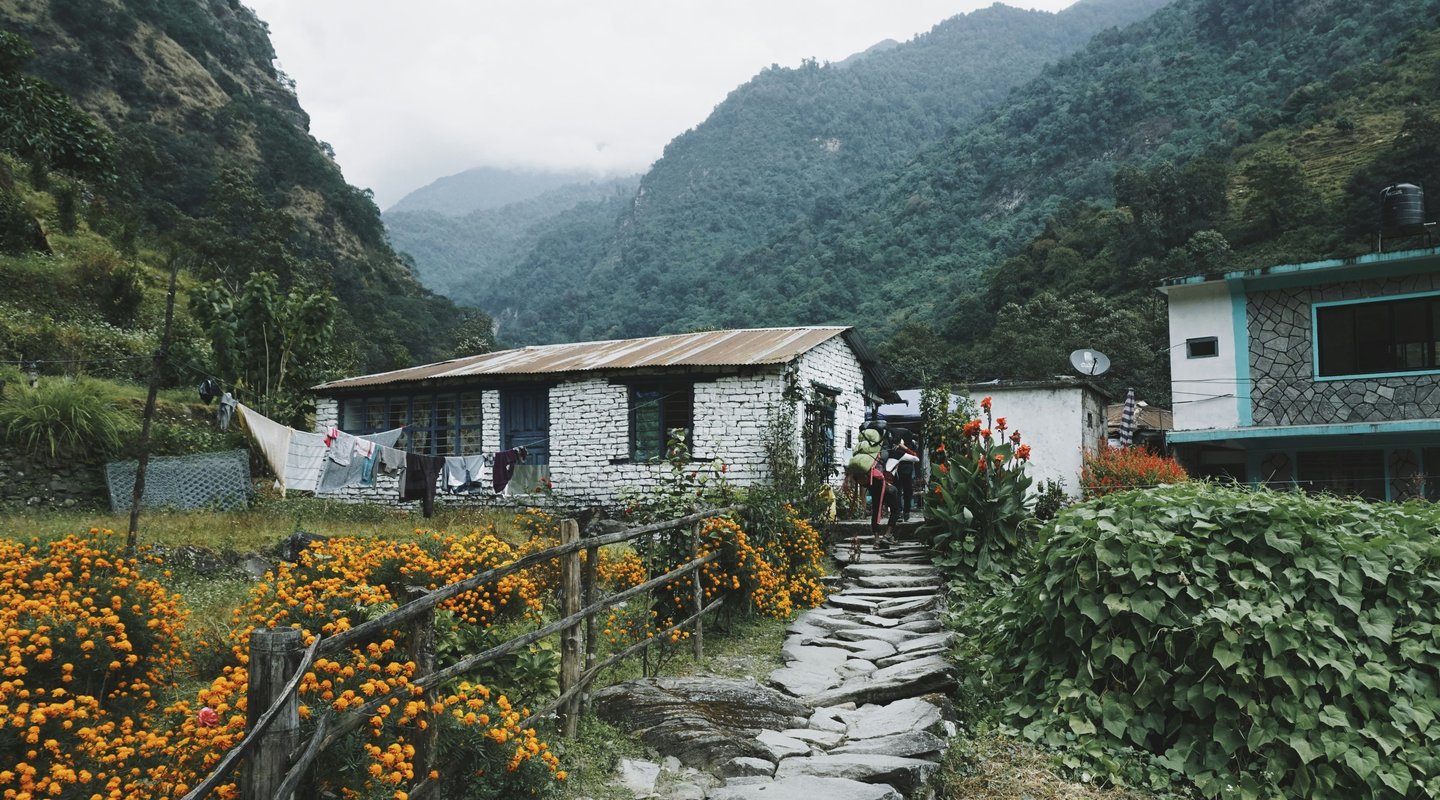

The Ultimate Guide to the Best Time to Trek the Annapurna Circuit
Trekkers to the Annapurna Circuit enjoy a once-in-a-lifetime experience, not just one of the world's best long-distance treks but also the most unusual adventure. The Annapurna Circuit trek ventures into the very center of the range in Nepal with an assured regal view of diverse scenery from subtropical rainforest to dry high-altitude desert. Throughout the trek, travelers are surrounded by the vibrant tapestry of indigenous culture and treated to unadulterated panaroma views of some of the planet's most awe-inspiring and highest mountains. When to undertake this incredible trek is a key component of planning. This in-depth guide will delve into the nuances of each of Nepal's four main trekking seasons—spring, summer/monsoon, autumn, and winter—and provide you with a detailed breakdown to help you choose the perfect time for your Annapurna Circuit adventure.
The Annapurna Circuit trekking path lies inside the Annapurna Conservation Area, itself renowned for its natural beauty and cultural wealth. The classic path circumnavigates the massif of Annapurna, the peak lying at the tremendous Thorong La Pass, with an elevation of 5,416 meters (17,769 feet). The duration of the entire circuit hike can also greatly differ, normally taking anything between approximately 10 to 17 days, contingent upon itinerary and pace. Through this amazing trail, hikers walk through an extreme change in scenery, starting from lush valleys and rhododendron forests up into harsh mountain terrain and finally downwards again to the drier elevations of the Mustang region. It's not merely the scenery that attracts you but the exciting cultural encounter with the diverse ethnic inhabitants here. You can also Explore our detailed Annapurna Circuit trek itinerary.

Weather conditions for trekking in the Nepalese Himalayas, including the Annapurna area, are strongly influenced by Nepal's seasonally well-differentiated climate. Spring, from March to May, is a season of rising heat and flowering vegetation. The season comes after winter and follows the onset of the summer monsoon. The monsoon season, or summer, from June to August is characterized by heavy rainfall, high humidity, and an increased risk of landslides in the lower areas. September to November is generally the ideal time for trekking, with clear weather and pleasant temperatures after the rains of the monsoon season. Finally, winter, between the months of December and February, is cold and susceptible to snow with icy trail conditions and pass closure, mostly at higher altitudes. Having the overall nature of each season is worth knowing in planning a successful and enjoyable Annapurna Circuit trek.
Spring is often among the finest seasons to complete the Annapurna Circuit trek since weather oscillates from winter to summer. During such times, temperatures at lower levels will be moderate and pleasant, from 10°C to 20°C. At night, the temperatures at high levels will be about 0°C, and layering will be needed. Although the spring season is usually arid, pre-monsoon rains can be anticipated later in May, and rain gear needs to be carried accordingly. The weather is usually sunny, with good visibility and distant vistas of the lovely mountains. There are some signs of likely haze at lower altitudes, especially towards the end of May. Spring trail conditions are good, with firm, dry trails, though there might be some leftover snow higher up, which is normally passable. Spring is the busiest time for trekking, with a reasonable number of trekkers.
While the trails are less crowded than during autumn, it is advisable to reserve teahouse accommodations in advance, especially for peak trekking seasons. While the weather is generally good, trekkers should exercise caution to prevent the risk of altitude sickness at high altitudes and make appropriate acclimatization plans. The riot of color is one of spring's biggest draws, when rhododendrons and other wildflowers erupt in abundance, blanketing the hillsides with a variety of hues. The long daylight hours also provide ample time to trek and enjoy the vistas. But crowds and the danger of late-spring rain showers are concerns. Advantages: Comfortable and pleasant temperatures make ideal walking conditions. Blue skies will normally be offering good vision and sensational scenery of the mountains. Flowering rhododendrons and painted landscapes make the trek more beautiful. Slow treks are possible owing to longer daylight hours. Drawbacks: Haze close to lower altitudes in May tends to obscure vision to some extent. Increasing numbers with regards to the off-seasons can mean full teahouses and trails. Showers of rain during late spring require the carrying of rainwear.
Spring is normally one of the best times to undertake the Annapurna Circuit trek as the weather is changing from winter to summer. During these times, low altitudes would experience moderate and tolerable temperatures of 10°C to 20°C. The night temperature at high altitudes will be around 0°C, and layers would be necessary. While spring is usually arid, the sporadic pre-monsoonal showers can be anticipated towards late May, and rain gear must then be placed in the bag. The weather is usually sunny with clear visibility and wide vistas of the picturesque mountains at a distance. Haze on low levels is forecasted, though more so towards late May. Spring trail conditions are generally great, with hard, dry trails, although there may be some lingering snow higher up, and this is generally passable. Spring is the most popular season for trekking, with a decent number of trekkers.
Nepal's summer overlaps with the monsoon months, typically June to August, and is characterized by extreme weather fluctuations of the Annapurna Circuit trek. Temperatures at lower altitudes range between 15°C and 30°C during this period. Heavy rainfalls occur during this season, especially in July and August. This heavy rain also raises landslide and flood risks, especially on the lower section of the trek, and is therefore not as preferred as a time to travel. It is low visibility due to constant cloud and rain, and they may limit or completely prohibit the beautiful mountain view. Trail conditions get tough since trails are muddy, slippery, and treacherous to walk on, and this raises fall chances. In addition, the leech infestation of the trail is also annoying for the trekkers. Although the weather is tough, the summer monsoon season has the least number of trekkers on the Annapurna Circuit, thereby providing a more isolated experience to those who are ready to bear the weather.
A teahouse stay is readily accessible and does not have to be reserved beforehand. During the monsoon season, green lovers and those viewing greenery, the appearance of the locations is altered with a river-puffed-up look and stunning waterfalls. It is also the time when some of the festivals of the locals could fall. But the great danger of landslides and flooding, the slippery and muddy roads, the poor visibility, and the leeches are a serious issue and hazard.
Pros: Lush and green scenery flourishes due to the monsoon rains. Fewer crowds offer a more peaceful and solitary trekking experience. Accommodation is easily available without advance booking.
Cons: Heavy rainfall and high humidity can make trekking uncomfortable. Poor visibility and obscured mountain views are common. Trails become muddy, slippery, and challenging to navigate. There is a higher risk of landslides and floods, potentially disrupting the trek. Leeches can be prevalent on the trails.

Autumn is normally the best season to hike the Annapurna Circuit, with the best combination of stable weather and fantastic scenery. During the post-monsoon period, the weather is pleasant and warm, between 5°C and 25°C. Weather is typically stable and dry, with minimal possibility of rain, ideal trekking weather. Autumn provides the clearest visibility, where blue skies are unobstructed and with expansive vistas of white Himalayan peaks. Weather on the trail is also perfect, where settled and dry trails are pleasant and easy to trek on. The trails are usually fine after the monsoon. As the busiest trekking season, autumn also has the highest number of trekkers on the Annapurna Circuit.
Thus, teahouses and lodges along the trekking trail can be extremely crowded, and a room must be reserved in advance. Although crowds may be a letdown for some, the lively atmosphere and sense of camaraderie among fellow trekkers can be an added bonus of trekking at this time. As in most high-altitude treks, altitude sickness is still to be anticipated, so acclimatization is still required. Autumn is also harvest time in Nepal and provides the trekker with a glimpse of Nepali rural agricultural life, and it is typically the time for the important Nepali festivals of Dashain and Tihar, providing special cultural experiences.
Pros: Stable and mild temperatures create comfortable trekking conditions. Clear skies offer excellent visibility and stunning mountain views. Trails are dry, stable, and easy to navigate. Opportunities to experience Nepali festivals and local culture abound .
Cons: The highest number of trekkers leads to crowded trails and teahouses. Booking accommodation well in advance is essential due to the high demand.
Winter on the Annapurna Circuit is a harder but perhaps more rewarding experience for travelers who are prepared to tolerate snow and cold. The temperature falls below freezing, especially at high elevations, and nighttime temperatures in towns like Manang and Thorong La Pass fall as low as -10°C to -30°C. Heavy snow is frequent, particularly in January and February, and can necessitate the closure of high passes such as Thorong La, spoiling trekking schedules. But on clear days, winter is marked by bright and usually superb visibility with breathtaking views over the white world. Track surfaces are usually ice and snow and thus hard, and suitable kit such as crampons or microspikes needs to be used. Winter sees the fewest number of trekkers on the Annapurna Circuit, offering a very peaceful and solitary experience amidst the stunning However, some teahouses and lodges, especially at higher altitudes, may be closed for the season due to the harsh conditions.
Possible risks and drawbacks are extreme cold, the risk of frostbite, heavy snowfall causing trail closure, and increased chances of avalanches in certain areas. These aside, consider two significant benefits of winter trekking. One is the unrivaled quiet and the breathtaking beauty of the Himalayas covered in white. Winter season is also the time when local winter celebrations can be savored.
Pros: Stunning snow-covered landscapes offer a unique and serene trekking experience. The fewest number of trekkers ensures solitude and peace on the trails. Crisp and clear mountain views can be spectacular on good weather days. Opportunities to experience local winter festivals might arise.
Cons: Extreme cold temperatures and the risk of frostbite are significant concerns. Heavy snowfall can lead to trail closures, particularly of Thorong La Pass. Challenging trail conditions with snow and ice require specialized gear and caution. Limited availability of some teahouses and lodges might restrict accommodation options.
Spring
Pros
- Pleasant temperatures
- Clear skies
- Blooming rhododendrons
- Vibrant landscapes
- Longer daylight hours
Cons
- Potential haze in May
- Increasing crowds
- Possible pre-monsoon showers
Summer/Monsoon
Pros
- Lush green scenery
- Fewer crowds
- Peaceful experience
- Readily available accommodation
Cons
- Heavy rainfall
- Poor visibility
- Muddy and slippery trails
- Risk of landslides and floods
- Presence of leeches
Autumn
Pros
- Stable and mild temperatures
- Clear skies
- Excellent mountain views
- Dry and stable trails
- Festivals
Cons
- Highest number of trekkers
- Crowded trails and teahouses
- Booking accommodation in advance essential
Winter
Pros
- Stunning snow-covered landscapes
- Solitude
- Crisp mountain views
- Winter festivals
Cons
- Extreme cold temperatures
- Risk of heavy snowfall and pass closures
- Challenging icy trails
- Limited teahouse availability

The "best" time for trekking the Annapurna Circuit depends on and is highly influenced by personal preference and priority. In the event that optimal weather is desired, autumn (September-November) will normally be ideal with settled, good weather and fine skies. Spring (March-May) sees favorable weather also but with somewhat increased chances of pre-monsoon rains. If smaller crowds are of higher preference, then the monsoon/summer (June to August) and winter (December to February) will turn out to be most preferable, as these have smaller numbers of climbers. For the most dramatic scenery with mountains, autumn once again stands out above all other seasons with their ever-clear skies that make the vast outlook nothing short of spectacular. Winter also has the potential to offer magical views of snow-covered mountains on clear days. Budget trekkers can potentially negotiate better prices on services and accommodations while trekking during summer/monsoon off-seasons and winter off-seasons due to low demand. The optimum best time period for your Annapurna Circuit trek will ultimately be the period of the year that most favors your own specific needs and purposes for what you would like to have from your trekking adventure.
Considering the seasonal outlook, the breakthrough months for the most consistently best climatic conditions on the Annapurna Circuit are going to be October, September, and November. These three months, all of which fall in autumn, succeed in getting the perfect mix of pleasant temperatures, dry weather, and minimal precipitation.
October usually gets the honors as the overall best month for trekking the Annapurna Circuit. October weather is typically stable and dry, with warm days perfect for trekking and cool, crisp nights. The air, cleansed by the previous monsoon, gives unrivaled views of the magnificent Himalayan range of mountains.
September and November are also excellent trekking months. September is the beginning of autumn, when the landscape is still green from the monsoon rains but the heavy rain season is generally over. November also has similar clear skies and settled weather conditions, though temperatures begin to gradually drop as winter approaches. These shoulder months of the shoulder autumn season can mean the advantage of fewer trekkers than during the peak of October.
For those whose priority is to experience the Annapurna Circuit with a greater sense of solitude, the off-peak seasons offer the most promising opportunities. You can also check our detailed Annapurna circuit trek 14 days for more information.
Winter (December to February) typically sees the lowest number of trekkers on the Annapurna Circuit. This period provides a uniquely tranquil experience for those who are adequately prepared to handle the challenges posed by the cold temperatures and potential for snow.
Summer/monsoon (June to August) also experiences a significant reduction in trekker numbers. While the weather during this season can be unpredictable and mountain views are often obscured by cloud cover, the trails are considerably less congested, offering a more isolated trekking experience.
It is worth noting that there is some conflicting information regarding the relative crowd levels of spring and autumn. While both are generally recognized as peak seasons , some accounts suggest that autumn might actually see fewer trekkers compared to spring. This difference in perception could stem from various factors, including specific periods within these seasons or individual experiences.
For individuals who are new to the world of high-altitude trekking, selecting a time with stable weather and manageable trail conditions is crucial for a positive and safe experience.
Spring (March to May) and autumn (September to November) are generally considered the most accessible seasons for beginners. These periods offer a more forgiving environment with moderate temperatures, good visibility, and relatively dry trails. These conditions help to make the trek less physically demanding and safer for those who are still gaining experience with high-altitude adventures.
Conversely, winter (December to February) is strongly discouraged for beginners. The extreme cold, heavy snowfall, and potential closure of trails and high passes can present significant safety hazards for those who lack the necessary experience and specialized gear.
Similarly, summer/monsoon (June to August) is not recommended for beginners. The high risk of slippery trails, landslides, and obscured views can make navigation difficult and detract significantly from the overall enjoyment and safety of the trek, especially for novice hikers.

October: The Golden Month
October truly shines as the prime month for embarking on the Annapurna Circuit Trek. During this time, trekkers can anticipate mild and comfortable temperatures, typically ranging from 15°C to 23°C during the day , which are ideal for extended periods of hiking. The nights become cooler, especially at higher altitudes, where temperatures might dip to between -5°C and 0°C. The skies in October are renowned for their clear, azure brilliance, providing exceptional visibility of the awe-inspiring peaks that define the Annapurna region. Rainfall is minimal during this month, ensuring that the trails remain dry and pleasant for walking. The combination of these factors makes October the top-recommended month for those seeking the best possible weather experience on the Annapurna Circuit.
December: Winter's Embrace
Trekking the Annapurna Circuit in December presents a distinct set of considerations. The primary safety concerns during this month stem from the cold temperatures, which can be extreme, especially at higher altitudes. Additionally, the potential for heavy snowfall introduces risks of slippery trails and can lead to the closure of high-altitude passes such as Thorong La. . The reduced daylight hours also limit the time available for trekking, potentially increasing the risk of being caught out in adverse conditions. While the trails are generally less crowded in December, this also means that there may be fewer trekkers around to offer assistance in case of an emergency. Trekking the Annapurna Circuit in December is generally safe for experienced individuals who possess the necessary winter trekking gear and a solid understanding of navigating high-altitude and cold-weather environments. However, for beginners or those without prior experience in such conditions, it can pose significant risks. It is strongly recommended to closely monitor weather forecasts and to be prepared to adjust trekking plans if conditions deteriorate. Engaging a guide who has specific experience with winter trekking in the Annapurna region is also highly advisable to enhance safety and provide expert navigation and decision-making.
The Annapurna Circuit offers special advantages at various points in the year, namely of interest for observing colorful blooms of flowers or taking broad, sweeping mountain vistas.
Flowering rhododendrons is the prime objective of the trek for the majority of the trekkers, and the best part of the circuit to witness nature in its pristine beauty is in spring (March to May). The flowering months would be most ideal in the months of March and April, when slopes would most intensely be decked with pink, red, and white rhododendrons. For those whose first preference is watching these lovely flowers, planning their hike during this period is advisable. For travelers who prefer to witness crystal-clear mountain vistas, the best time to attempt the Annapurna Circuit is autumn (September to November).
Post-monsoon weather is beautifully clear, free from the haze and dust that at some times of the year, obscures faraway peaks. It offers perpetually exposed and simply magnificent panoramic views of Annapurna and the surrounding Himalayan ranges in picture-perfect blue skies. Even during the spring season, comparatively good views are available, but autumn presents safer weather conditions for simply sensational mountain sightseeing.
The Annapurna Circuit is a journey of unimaginable beauty and adventure, and the period in which its splendor is best appreciated is a matter of personal preference. Any of the four seasons of trekking—spring, summer/monsoon, autumn, and winter—that offer a unique set of conditions, each with its advantages and disadvantages. By being very selective of your requirements, whether ideal weather conditions, low crowds, scenic views, or financial considerations, you can opt for the best season to suit the most memorable and enjoyable Annapurna experience. It is our advice that you give due consideration to the pros and cons of every season, plan meticulously for your trek, and be ready to experience an encounter that will imprint in your minds the majestic Himalayas forever. For a comprehensive guide to trek planning, such as itinerary suggestions, what to pack, and how to book, we invite you to view the other material on our website https://himalayanhero.com/.





